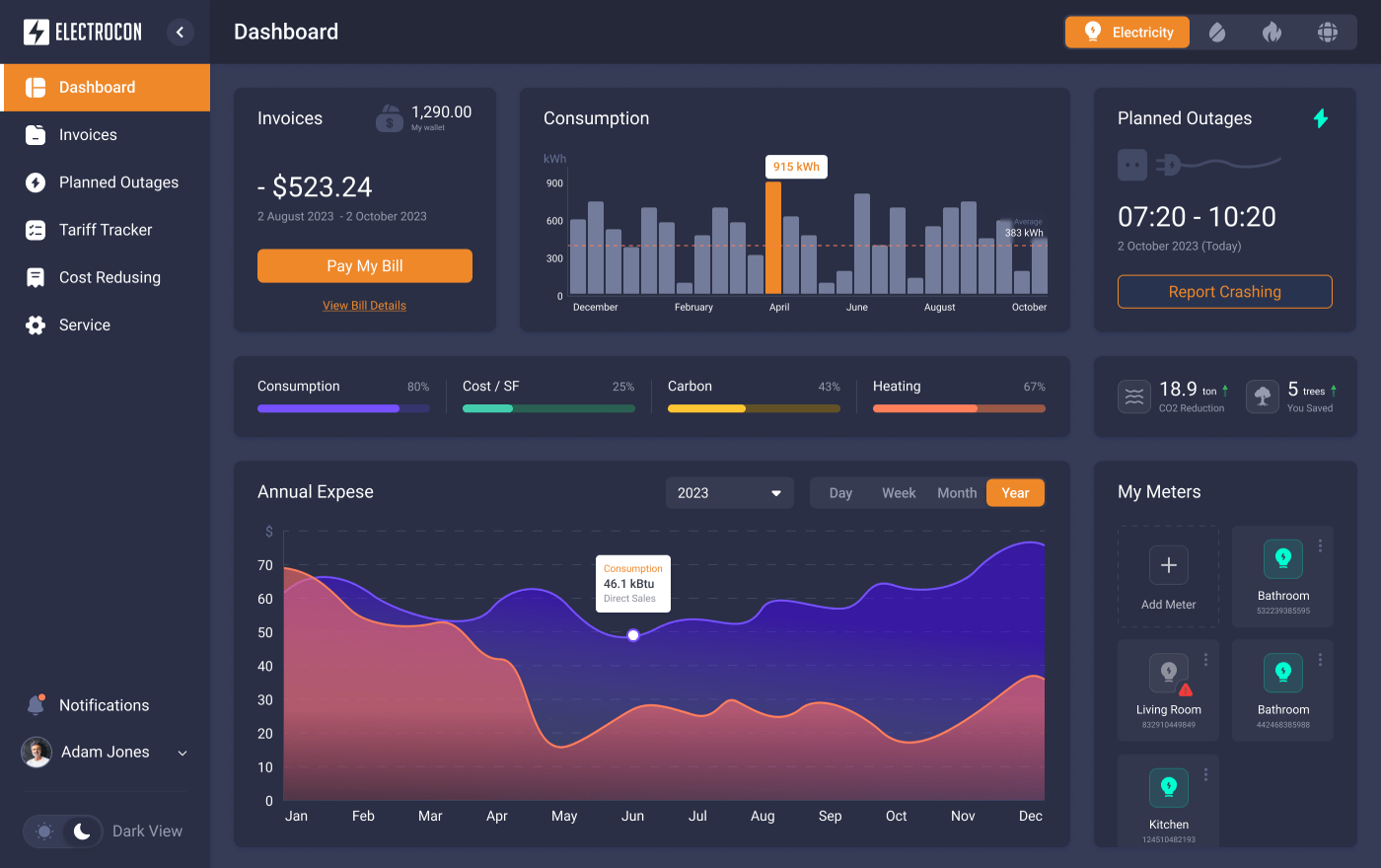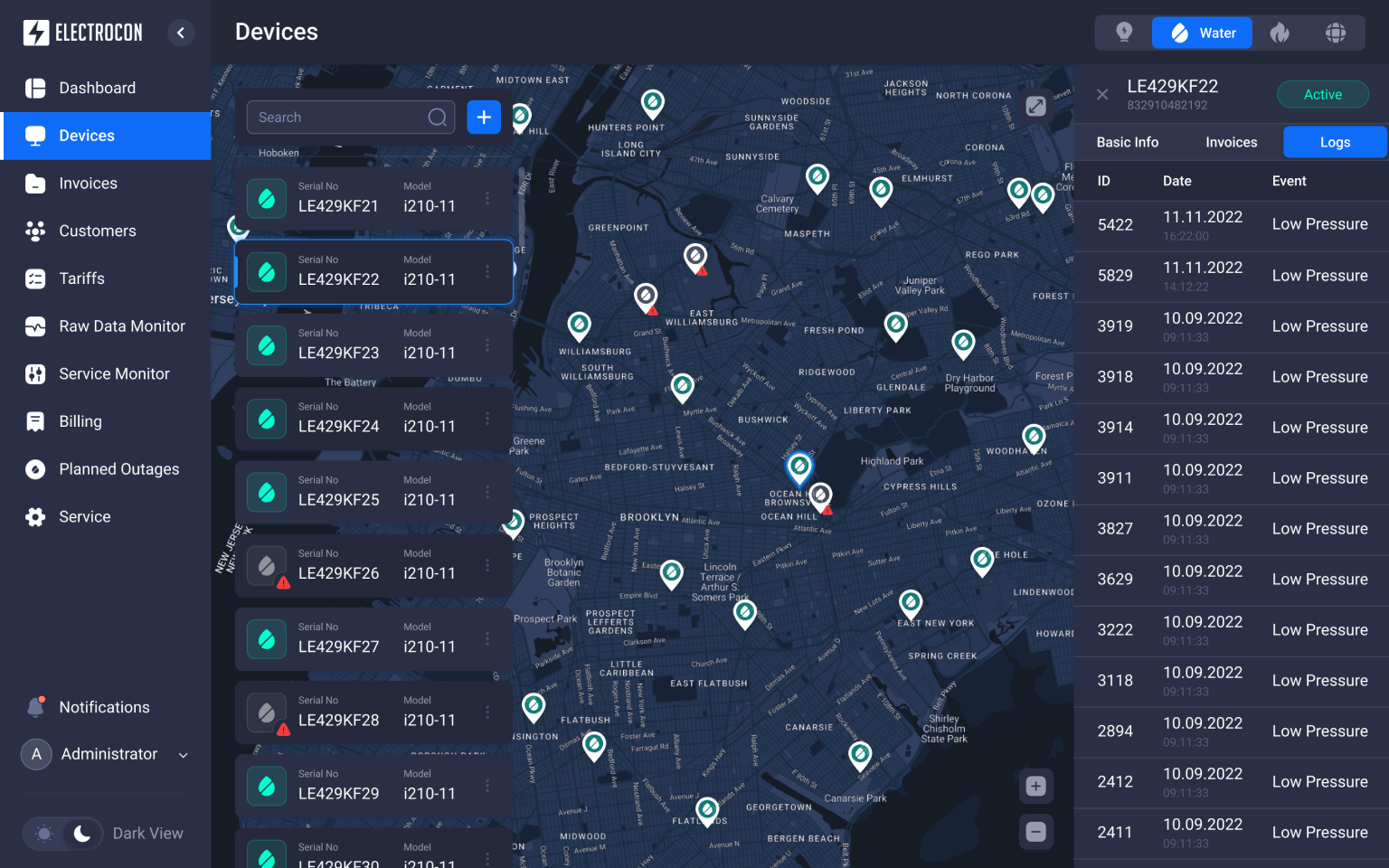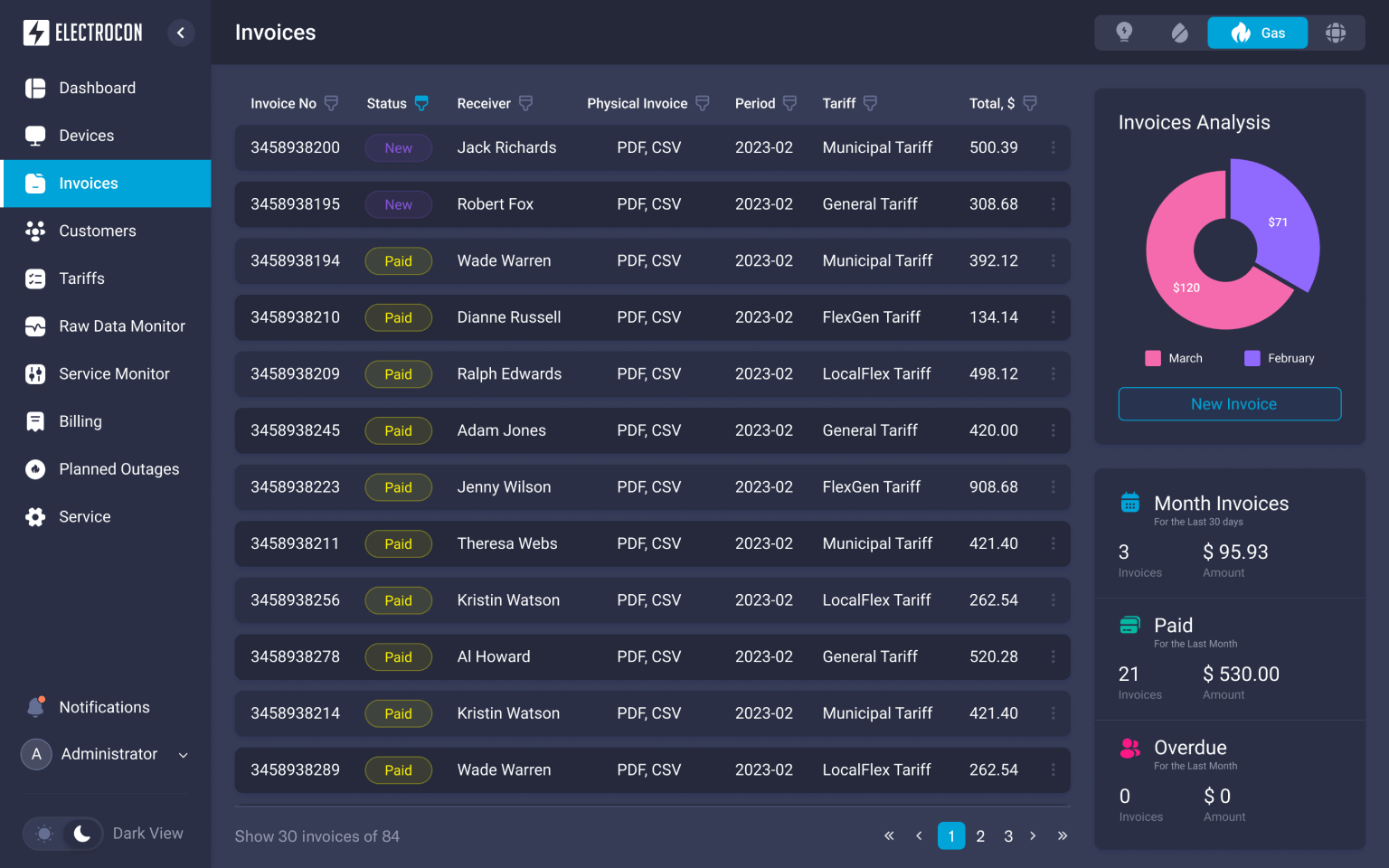Custom Energy Management Software
A custom energy management software (EMS) created for monitoring, collecting, and analyzing different data on utility usage. The system provides transparent information on payment and consumption data to various target consumers, including households and business organizations.

Business Challenge
In the modern world, energy is the foundation for the development of basic industries. Because of the changes happening every day, businesses face various challenges. Data can be fragmented and stored in different places or incomplete, and this chaos needs to be automated and put in order. Also, energy cost and consumption rises both for businesses and end users. Energy data monitoring tools are ideal assistants in this case, because they help utility companies to manage resources, reduce consumption, move towards greater use of “green” energy sources (solar panels, windmills, etc.), and, as a result, saving the budget.
A company that occupies a certain niche in the power industry and solves the problems of providing households with modern equipment for measuring and accounting of utility usage asked us to develop a custom energy monitoring software.The customer’s company provides ready-made service to both households and business organizations, and they wanted to have a SaaS application that will also be promoted to other commercial organizations with similar tasks. The customer wanted to get the following out of the solution:
- better data monitoring with such IoT devices, as smart meters, and data gathering on utilities;
- detailed and easy-to-understand information on consumption, payments, and payment dates;
- implementation of centralized notifications of accidents, malfunctions, and other problems;
- organization and streamline of the service provision of equipment maintenance;
- addition of a simple and user-friendly utility billing system.
Solution
Our team has many years of experience in providing companies from various industries with custom web application development services that also include data visualization expertise. We know which data visualization tools and techniques improve overall data management and data analysis. Therefore, we were able to find a common ground with our client, who wanted to have a better and more efficient control over data.
Per their request, we developed energy management software that allows users to solve many challenges related to the setting and monitoring of reasonable energy utilization (water, gas, etc.). According to the needs of our customer, the following features were added to the custom EMS:
- up-to-date online consumption data analytics;
- regulation of consumption at the most advantageous rates;
- online payments and invoice history;
- transparent monitoring available for municipalities and other energy suppliers;
- power outages and emergency shutdown reports;
- scheduling of planned shutdowns.
To meet the requirements, the energy management system (EMS) was developed for the following user categories, each getting their own features and functionality:
To ensure the project’s success and mitigate risks associated with knowledge silos, we implemented a team rotation strategy. Team members periodically switched roles and responsibilities across different modules of the system, such as data visualization, IoT integration, and billing. This approach not only improved collaboration and knowledge sharing but also ensured that no single team member was the sole expert on any critical component. As a result, the team maintained high productivity and adaptability throughout the 16-month project.
Domestic and commercial end users
The web application that is also compatible with Android and iOS can be launched on both desktop and mobile devices. It provides real-time information on the quantity of resources consumed (electricity, gas, and water). If the user has solar panels, windmills, or other alternative power generators available, they can also be connected to the system and be able to regulate usage by switching between natural sources and municipal services. It is possible to make online payments and keep a history of consumption and billing. Thus, analyzing the details, a user has the prospect of switching to a more profitable tariff or reduce consumption in the time slots when the price is high.
Outage reporting allows users to have real-time access to municipal services or commercial utilities in case of power outages or other accidents. The system has a reminder feature that notifies about the planned power outages, displays the locations of outages on the map, and allows users to track the scheduled outages for several days in advance.
Commercial service organizations
The aspects of this target audience were considered, and certain modules were implemented in order to help commercial service organizations that provide public utilities for residential complexes, shopping centers, educational facilities, and enterprises. One of the modules allows real-time data monitoring on utilities consumption for each of the serviced facilities (or accumulated data). The goal of the second module is to receive information on unplanned outages or other accidents.
Also, for each service, object data is collected and presented on the timeliness of payment for consumption, debt, and tariffication. It is possible to calculate utility charges on “live” consumption data in accordance with the applied tariff: the system receives up-to-date information from enumerators, applies the necessary tariff and, as a result, invoices for payment to the consumer in a given period. Consumption and payment history are both kept in a section of each serviced facility.
Payment and consumption tracking is another implemented module. Since the data is received and processed in real time, it should be possible to check the accuracy of these calculations, for example, for the total of the month. The EMS generates reports that are provided to municipalities and other organizations responsible for control. In such a way, the app provides a full monitoring cycle to stakeholders, from raw consumption data to processed calculations.
Project in Figures
Duration
man-hours
Size

Applied Technologies




Result
The client was satisfied with the custom energy management software development services we provided, and all the requirements were successfully met. To have the best experience utilizing the system, our developers used their huge experience in developing with React JS and Node JS and successfully applied these technologies to the application.
The utility management system we developed allows energy and utility companies to easily identify opportunities for improvement, planning, and saving money in their operational activity. As a result, it provides users with better services, saves more energy, and ensures customer loyalty.